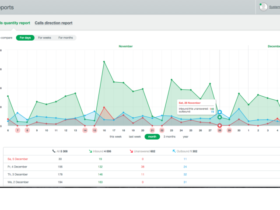The importance of the modern lending market was once again confirmed during the pandemic. While some companies have adapted to the restrictions, many traditional lenders have begun investing in technology to accelerate innovation. Thus, lenders not only created new business models, but also new strategies for the future.
In the United States (in accordance with the CARES Act), the Paycheck Protection Program was established, which provided funds for small businesses to cover eight-week paychecks and expenses. It is important to note that this program has been set aside $ 659 billion long (which prompted financial institutions to adapt their systems and make 1 hour payday loans quickly).
So Finextra spoke with Richard Morgans (GM UK&I), Alex Marsh (Head of Klarna UK), and Paul Elliott (head of mortgages, Atom bank) about how government initiatives have impacted lending in 2021. They were also asked questions about how technology can change the traditional lending system. Below you can explore the highlights.
• Why is agility so important?
Morgans said that finance professionals played a big role in the allocation of government budget packages during the coronavirus, as well as filling the large credit deficit (giving clients greater access to credit). This is why, and for many other reasons, flexibility and agility in a pandemic is especially valuable, as is the ability to adapt to needs.
However, Morgans also noted that he is concerned about the growth of non-performing loans and possible capital depletion. He said that those lenders who were most flexible during the pandemic will be best equipped to tackle new challenges. Elliott also added that there has been a significant increase in borrowing from small and medium-sized enterprises, many of which have not previously done so. He said the BBLS and CBILS schemes gave lenders a government-backed guarantee that the loans would be repaid (to stimulate more lending). Otherwise, lenders would cut their costs because of Covid.
Elliot also explained that aligning application transitions with prescribed schema rules requires flexibility with both the broader operations models and the banking stack.
• What should be changed in traditional lending methods?
You probably know that many banks are trying to fix it with a lot of filings, and still rely on manual processes. Thus, when a client applies for a loan, the data is usually entered manually (even if there is a digital interface). Thus, banks should focus on improving the user experience in order to stay ahead of the competition. Digitizing the client interface is just the first step. Morgans also says that internal processes also need to be transformed in order to ensure fast creation and smooth adaptation. Cooperation with fintech companies will help automate the entire process, which will eliminate disruptions and excessive costs.
• What about determining credit worthiness?
Technology can now revolutionize traditional ways of working with innovations such as optical character recognition, machine learning and so on. APIs can also help banks access transaction data from current accounts and use it for more detailed risk analysis and classification. Morgan says that lenders use a limited set of data sources to determine creditworthiness (which works with financially active people), they are not so good at collecting information on underserved segments. However, using open APIs, real-time data can enable lenders to connect with third-party vendors and data sources. Thus, it will be possible to more accurately assess the client’s risk
Returning to Elliot, it’s worth noting that he investigated how ownership of customer data gave lenders a competitive edge. Thus, institutions can use this data to track income and cash flows. He added that at Atom they use Open Banking, which helps to automatically confirm income, determine availability, and risk indicators such as high-cost lending or gambling. Thus, it provides a higher quality of customer service and reduces the amount of processing (compared to sending paper documents).
It is important to note that, in Elliot’s opinion, the credit rating is still a useful metric, however, it may consist of outdated information or data. Thus, he says that access to information about the account can provide the lender with a more complete picture of the financial condition of the borrower.
• What is known about buy-now-pay-later?
Swedish fintech Klarna has developed a buy-now-pay-later (BNPL) plan. So, in 2020, Klarna had sales of $ 53 billion (up 46% from last year). In terms of creditworthiness, it is believed that the current system serves consumers of traditional products well, but does not attract users of low cost alternative products.
It is also worth noting that Klarna is trying to combine the data of the current accounts of consumers with the data of the Credit Reference Agency in order to build the most current financial situation of the borrower. This solution can provide effective lending and borrowing, and it will not only improve access to loans, but also allow you to bring new products to the market knowing additional information about customers.
Thus, at the moment, buy-now-pay-later is a good alternative to revolving loans, as well as best payday loans. Morgans believes that buy-now-pay-later is a popular option and its demand at the moment is undeniable. He encourages banks to look into what they can learn from the BNPL.
• What is known about mortgage products?
Since many people have owned homes for decades, there is an opportunity to enter the market with new mortgage products for clients. Morgans added that by leveraging new technologies, lenders will be able to attract more potential clients to the mortgage market. He says that mortgages offer consumers flexibility in how they manage their finances, as they can decide how they will pay back or save the balance of the mortgage. Also, since the monthly payments go only to the interest on the mortgage, the consumer has more income that can be spent on other needs. At the end, Morgans also talked about how customers’ needs are constantly changing, so it is very important to anticipate and fulfill their requirements.






